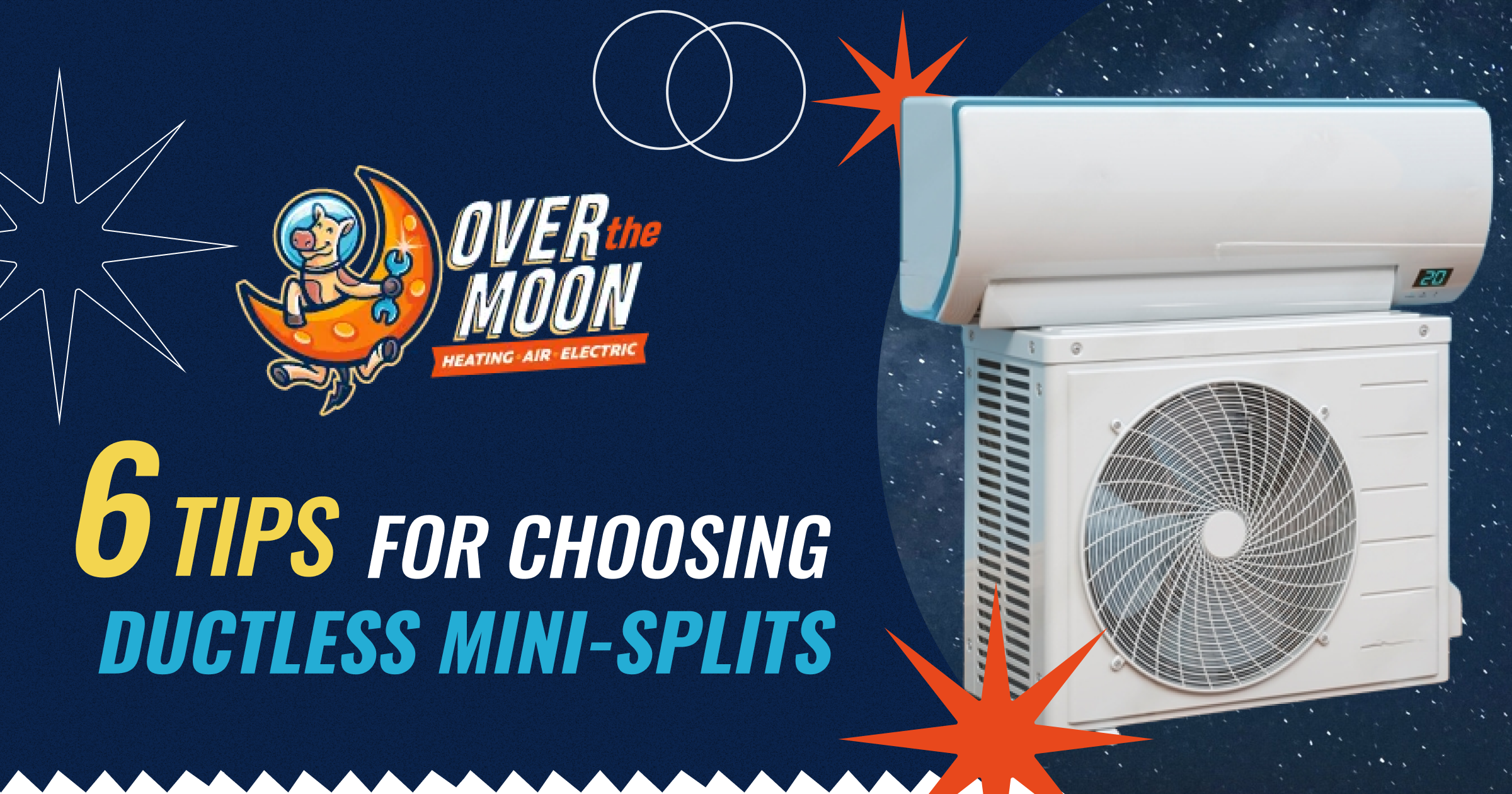Choosing the right ductless mini-split will ensure your home is comfortable and energy efficient. The technology has been gaining popularity in the United States. There are now many different brands, models, and sizes to pick from. In our guide to ductless mini-splits, we covered the basics of installation. Here are some tips that can help maximize the benefits.
1. Think About Why You Need a Mini-Split
Knowing why you’re purchasing a mini-split is crucial. After all, zoning can resolve family disputes over temperature control (occupants can make a room warmer or cooler without making others uncomfortable). The versatility of a ductless mini-split is another benefit. It can be installed if you’re:
- Adding a New Room: A mini-split can serve a finished basement, a building addition, or an apartment over a garage.
- Improving a Garage or Workshop: You can achieve climate control in your workspace without a space heater in winter or sweating in summer.
- Heating/Cooling an Enclosed Porch: If you have an enclosed outdoor space, a mini-split unit can be installed to provide year-round climate control.
2. Determine the Size of the System
A common mistake is not putting enough thought into the system’s size and capacity. While a professional can perform a load calculation, you must first consider your need for a mini-split. You can estimate the number of British Thermal Units (BTUs) required. For example, a room up to 300 ft2 needs a 6,000 BTU mini-split and a room up to 1,300 ft2 needs about 24,000 BTUs.
Does your home have an open floor plan? If so, a single-zone system may suffice (a zone can be more than one room). Or, you can install a dual-zone system to heat or cool the living space and bedrooms separately. Multi-zone systems consist of separate units for climate control in several rooms, areas, or parts of a building.
3. Consider the Best Type of Indoor Unit
Indoor mini-split units come in different styles. You’re not limited to one type of unit if it doesn’t fit in a room or with your decor. Here are the types of indoor units available:
- Wall-Mounted: A wall-mounted mini-split is the easiest to install. It’s placed high on a wall. While it’s typically neutral-colored and matches many types of decor, its size can compete with preferences for storage or artwork.
- Floor-Mounted: A floor-mounted model is installed on the lower sidewall, making it less obtrusive. It’s also easy to install. You can even hide the 3-inch hole for the coolant line, drain, and wiring behind the unit.
- Ceiling Recessed: The ceiling cassette, which contains the air handler, is mounted in the space above the ceiling. Only the ceiling-mounted grill is visible and allows supply and return air to pass through. This model also frees up your entire wall space.
Other types of ductless mini-split units include floor-standing models. In homes with existing ductwork, a concealed duct mini-split can be installed to heat or cool one or more rooms/areas. A horizontal ducted attic mount unit installs above the ceiling; the air handler is placed directly above the space to be climate-controlled.
4. Determine the Unit’s Energy Efficiency
Energy efficiency is one of the perks of having a ductless mini-split system. But not every system has the same rating. Like other HVAC systems, mini-splits have a Seasonal Energy Efficiency Ratio (SEER), which measures an AC’s efficiency over an entire season. The higher the SEER number, the more efficient the system and the less you’ll spend on energy costs.
The average SEER rating for a central AC is 16, but mini-splits have an average SEER rating of about 20 (higher efficiency units have SEER ratings in the 30s to as high as 42). Another measure of efficiency is the Heating Seasonal Performance Factor (HSPF). Heating efficiency ratings go from 1 to 10, with 10 being the most efficient. When buying a mini-split unit, look at both its SEER and HSPF ratings.
5. Find the Quietest Unit Available
Mini-splits are quiet compared to most air conditioners. Sound levels are measured in decibels (dB). An indoor unit can run at a sound level as low as 19 dB (but most run at 30 to 50 dB). By comparison, a whisper is about 30 dB, and a refrigerator operates at roughly 50 dB.
6. Compare the Upfront Cost vs. Long-Term Savings
Ductless mini-splits are generally more expensive to install than central AC systems (although you don’t pay for ductwork). But the cost is highly variable. You’ll pay more for a higher-end brand, while the larger the system and more air handlers you install, the more expensive a mini-split will be. To balance the installation price with annual savings, schedule an energy audit or blower test. It will help estimate the right unit size and determine how to reduce energy loss in your home.
Call Over the Moon for Help Choosing a Ductless Mini-Split
We’re trusted for high-quality mini-split installation in and around Waukesha County, WI. A mini-split heating and cooling system can provide zoned temperature control during every season. By knowing why you need a mini-split and finding a system that’s the right size, type, and efficiency (plus quiet and affordable), you can benefit from improved comfort and long-term savings.
Over the Moon’s ductless mini-split installation professionals can handle the most complex projects. They’ll also help size and select equipment and test it to ensure it runs as expected. To request a consultation or AC installation in your home, contact us online or call (262) 218-2881 today.

